In two decades the US has spent $21 trillion on war, the military and militarizing society
Lindsay Kashgarian, Program Director of the National Priorities Project and co author of “The State of Insecurity, Cost of Militarization since 911”, reveals that the United States has spent over $21 trillion since 911 on domestic and foreign militarization and explains how this astronomical sum could have been put to far better use.
The cost of militarization
It's been 20 years since 911 and the US response to 911 changed the United States and the world and we wanted to look at what the US has spent on all of this response and that includes everything from the wars in Afghanistan and Iraq to the US remaking of our own immigration system here, and our expansion of the powers of federal law enforcement.
So, the US response to 911 has included a lot more than just the wars, it's also included a lot of things that have increased militarization and oppression here in the United States, and we wanted to look at what all of this has cost us, especially because right now the US is facing, as is the rest of the world, a pandemic and a climate crisis, and other problems that really require major investments in order to solve them.
And what we found is that over the last 20 years we spent $21 trillion on war, the military, and militarizing our own society here in the United States.
Lindsay Kashgarian, Program Director, National Priorities Project
Mr. Biden said that the cost of war in Afghanistan was about two trillion where did the rest of this money go?
Two trillion is about right for the war in Afghanistan but that's only a part of it. There's a study by the cost of war project at Brown University, that showed that the wars overall have added up to 8 trillion so far. So the Afghanistan war is actually a relatively small part of that.
But what the President isn't counting {taking into account] is all of the other spending that the US has done on our military.
We have wars, a war in Afghanistan, we had a war in Iraq but the war on terror that the US military engaged and expanded to 85 countries, and that included countries where the US was involved in training militaries, countries where the US was involved in direct combat, and countries where the US was engaging in drone strikes.
So there's a lot of activity that was part of the war on terror that wasn't just limited to Afghanistan. Now, there also was a huge military buildup that went behind that.
So the US is spending almost twice now what we were on our military prior to 9/11 and the majority of that, not gone directly to the wars in Afghanistan and Iraq, but it is related and it was spurred by the US response to 911 and some of what that pays for are the 750 military installations around the world.
Many of them are not directly related to the war on terror, but they are the US military presence all over the world. We have about 200,000 troops that we have permanently based overseas at any given time, and we spend as much as the next 10 countries combined on our military, so it includes all of that military spending, and the total on our military over the last 20 years is 16 trillion. So that's the vast majority of what we're talking about.
Lindsay Kashgarian, Program Director, National Priorities Project
It must have been difficult to access all this data; how did you acquire the official fact and figures?
The US publishes budget numbers through a few places.
We use numbers from the Office of Management and Budget, which is a part of the White House, actually, and every year when the President puts out their budget proposal for the coming year, they also put out data on what the US has spent on things over the last, actually goes all the way back to 1976 but we were particularly interested in the past 20 years.
So we use published data from the federal government from that source and that is where almost all of our calculations came from.
Lindsay Kashgarian, Program Director, National Priorities Project
Could you give us a little bit of introduction I mean, how did you get involved with this report?
I have a master's degree in public policy, so I've been interested in public policy questions for a long time I was actually primarily interested in poverty in the US when I started, but one of the things that we see so often in US politics is that politicians claim that we can't afford programs to end poverty here in the United States.
And so that connects to this question of, you know where is our money going, what are we spending money on why can't we afford those poverty programs?
And the answer is that we can't afford it, we just aren't choosing to invest our money that way.
Now my interest goes back much further to mostly US domestic politics but I became interested in this mostly because of the budget questions of sort of what are our priorities and where are we spending money.
Lindsay Kashgarian, Program Director, National Priorities Project
One of the things that have always shocked outsiders about the United States is the cost of health care.
One sees on the internet how shockingly high sometimes the bill for a very simple medical procedure is for Americans, couldn't that money, even a tiny fraction of it, have gone to health care so that Americans wouldn't have to pay so much?
The US has one of the most expensive health care systems in the world. And among wealthy countries we provide some of the least generous health benefits to our citizens.
So yes, we could have spent some of that money differently. A couple of the ways that we look at where we might spend that money differently, and not just thinking about how we could have done things differently over the last 20 years because, obviously, we can't change that.
But looking forward to the next 20 years and what we are going to do for the next 20 years, we found that for less than one quarter of what we've spent on militarization in the last 20 years we could invest in a decarbonized, fully renewable electric grid for the US, which is something that we desperately need, something that we absolutely could have invested in 20 years ago, we didn't make that choice but 20 years from now, we need to have that done, we can't be looking 20 years from now at a situation where we're still dependent on fossil fuels for our energy.
So that's one of the things that we, that we could be doing instead.
There also is a major problem with unemployment and with low wages in the United States. So we said that for $2.3 trillion, we could create 5 million jobs paying $15 an hour which is what's considered sort of a minimum livable wage here in the United States. And we could create those jobs for 10 years for $2.3 trillion; 5 million of them {jobs].
So there are quite a few things that we should be doing with this money instead, what we unfortunately are seeing is that the administration and Congress right now are continuing forward with the path of high spending on militarization, the Biden administration has requested to spend even more than the Trump administration on our military, they are keeping funding for our immigration system, ICE, which does our deportations and our border patrol they're looking to keep the funding for those things at the same level that it was under President Trump, and President Trump increased the spending on those things tremendously.
So we're not looking at a very good picture right now but there are members of Congress who are looking to change this and who are working with us to try to reduce Pentagon spending and shift it, and we also have polling that shows that the majority of people in the United States want to cut Pentagon spending by 10% and shift it into domestic priorities.
Lindsay Kashgarian, Program Director, National Priorities Project
A large slice of this money went to private contractors, whenever you read about an American conflict anywhere, you will definitely be hearing the names of those contractors.
Who are these contractors and how does the system work?
So what we found is that over the last 20 years we've spent $16 trillion dollars on our military and $7 trillion of that, more than half of it went to military contractors. So it's a hugely profitable industry.
There was also another study that showed that if you bought $10,000 worth of defense stocks at the beginning of the war on terror today they would be worth $100,000 so it's been a huge profit maker for a lot of people and for the industries that have been involved.
Now, the biggest military contractor in the United States for many years has been Lockheed Martin, who are the makers of the F 35 jet fighter, which has cost billions of dollars more than it was promised and is has not even done what the Pentagon wants it to do.
We buy about almost 100 More of these jets every year at a cost of about 10 billion to $12 billion. So it's a hugely profitable programme for Lockheed Martin.
Lockheed Martin takes every year more than $40 billion in government contracts, and in Pentagon contracts that's almost three times the budget of the CDC during the pandemic, which is our Centre for Disease Control budget during the pandemic was $16 billion, and every single year we are giving Lockheed Martin, more than 40 billion.
Lindsay Kashgarian, Program Director, National Priorities Project
Big corporate corporations have long been dictating the future of the rest of the world and there is no denying it.
Is there any way that we can stop this, apart from just trying to spread the word and enlighten the public, is there any practicable way to channel this money to the American public rather than making bombs?
Well here in the United States, the best way to do that is for people to contact their members of Congress.
There are members of Congress who are not supportive of this system, you know, going back 20 years ago there was only one member of Congress in the US who voted against the war in Afghanistan, but today there are several dozen who are more progressive on foreign policy, who want to spend less on the Pentagon and more on other things.
And so what we need to do is support those members of Congress, and encourage other members of Congress to join them. And we have movements that are doing that here in the United States, we have organizers who are working on that, and the members of Congress who are supportive of this in Congress are also working on convincing their colleagues in Congress to join them.
Just last year we had more than 90 members of the House of Representatives vote in support of a 10% cut in the Pentagon budget. And now that is far less than half which is what we would need to actually win it, but it is several times more than we had on a similar vote, just a couple of years ago so we're making progress.
Lindsay Kashgarian, Program Director, National Priorities Project
So what do you think, what went wrong in Afghanistan?
What went wrong was the entire 20 Years went wrong. And this was not a secret; this is something that the Pentagon leadership has known for many years.
The Washington Post did a big expose of the Pentagon's programs and work in Afghanistan in 2019 that showed that the Pentagon kept representing what they were doing in Afghanistan as a success.
They kept saying, what we're doing is working. And we're remaking Afghan society we've, you know, created this government and this army and it's all going great, but it was never true.
It was never true and the Pentagon leadership knew that it wasn't true but they kept saying that what they were doing was working to justify the continued presence and justify the continued investment, but it was never working so the fact that, you know what we've seen now in Afghanistan with Afghanistan falling to the Taliban, immediately after the US left.
That's not a problem with the US withdrawal; the problem was the US occupation itself from the very beginning.
Lindsay Kashgarian, Program Director, National Priorities Project
Iran restores SMS access, eases curbs on domestic messengers
Hamas says Israeli army, settlers coordinating West Bank attacks
Israel says Trump's Gaza oversight panel 'contradicts its policy'
Iran reports record natural gas processing capacity
US judge bars federal agents from pepper spraying, arresting protesters in Minnesota
Another Palestinian baby freezes to death in Gaza as Israeli limits stall winter aid
VIDEO | Australia submits to Mossad
VIDEO | Israel’s yellow line: De facto annexation of over half of Gaza



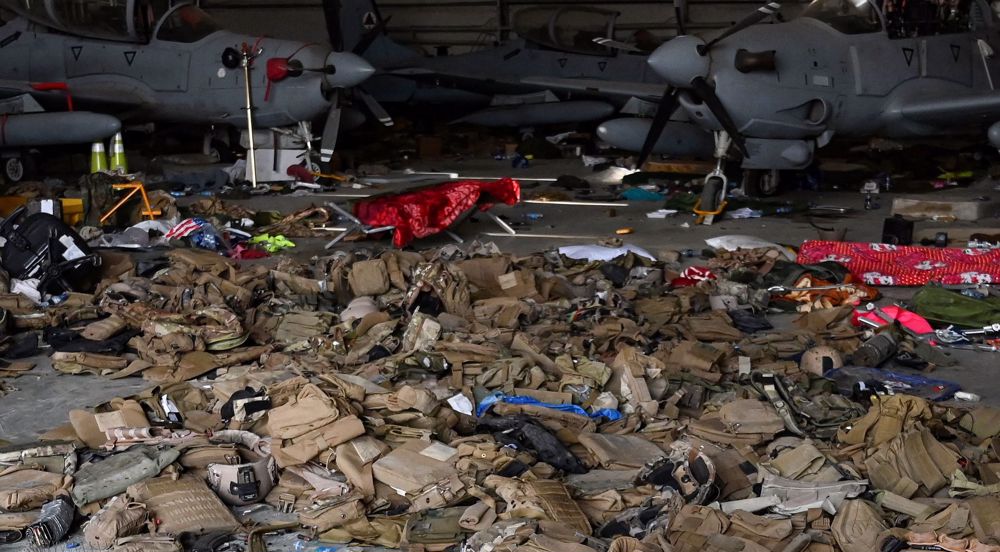
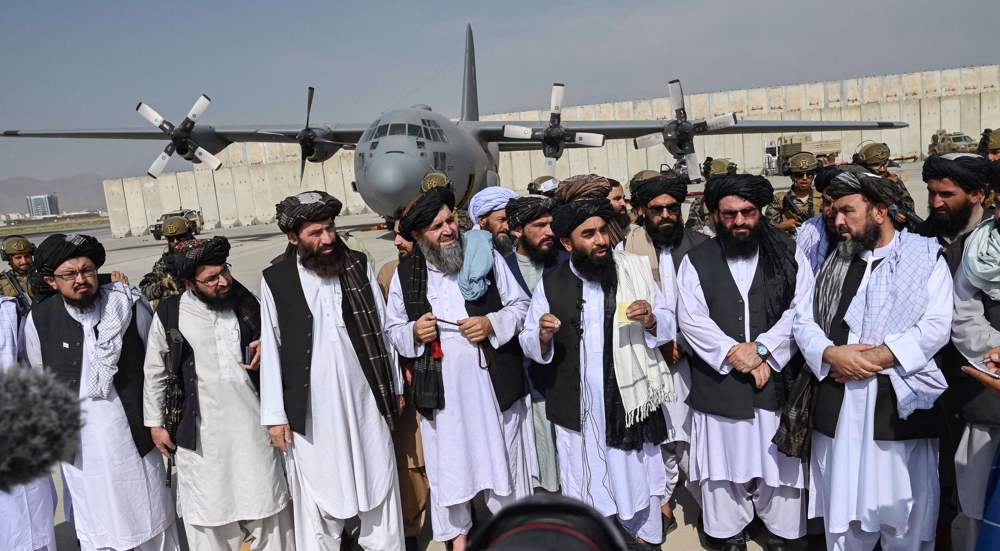




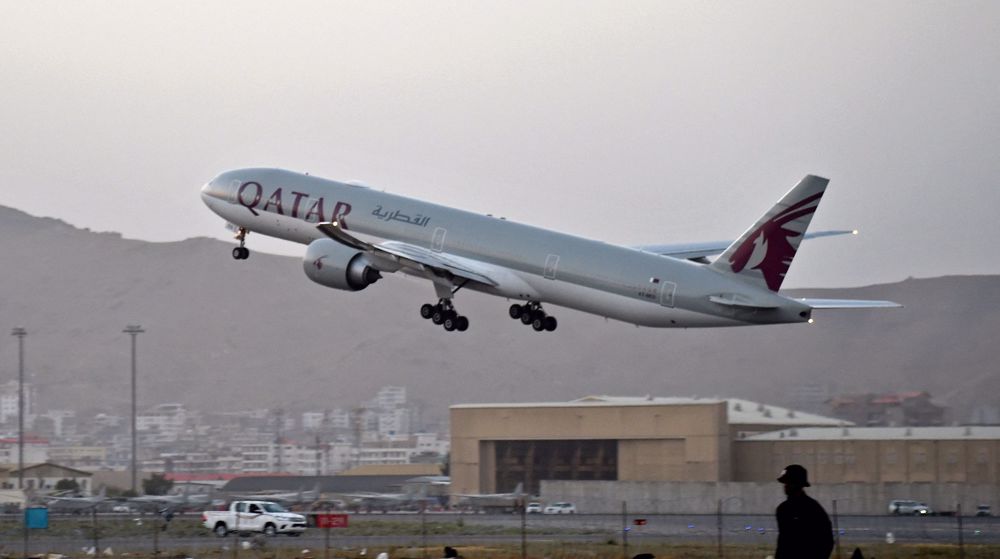
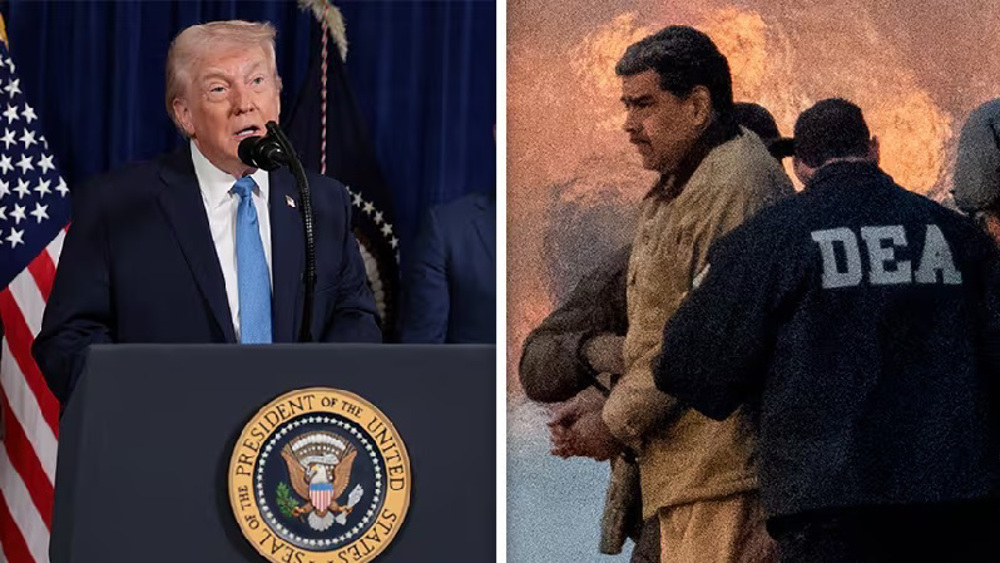

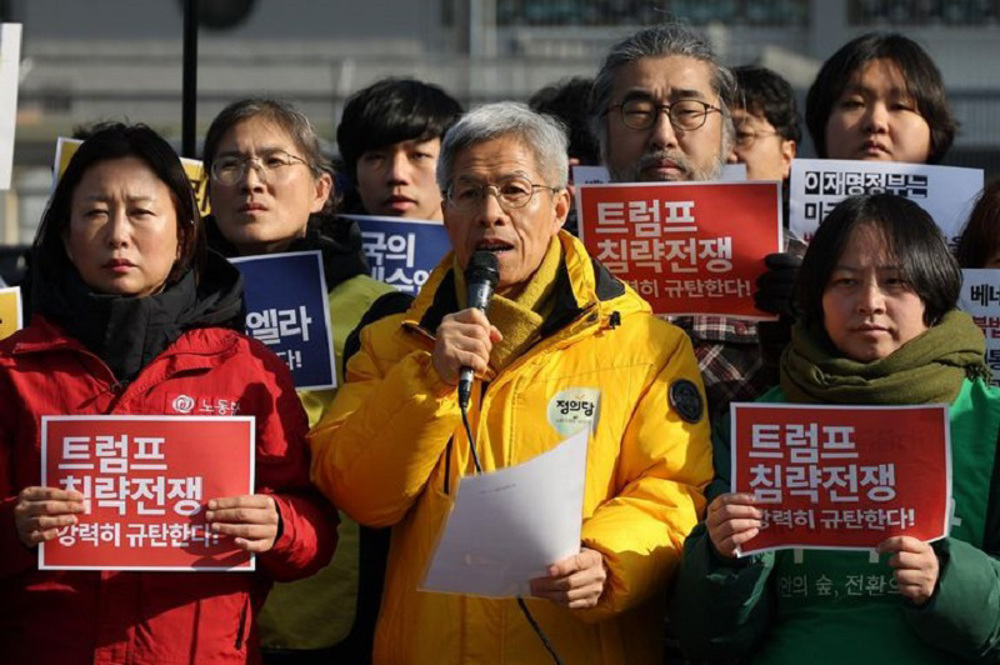




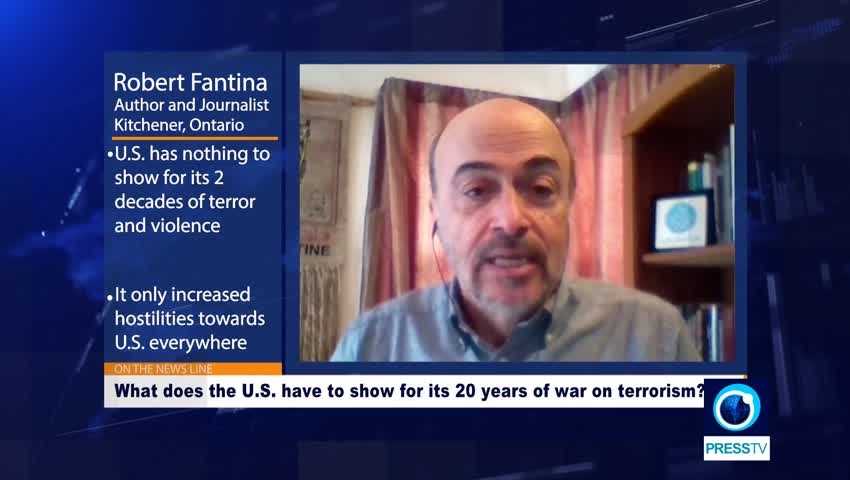



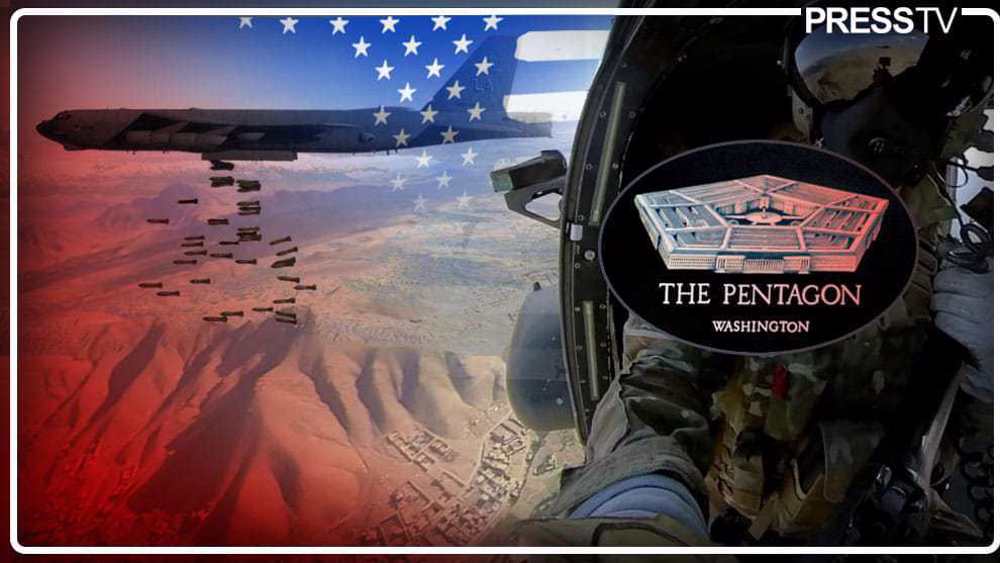

 This makes it easy to access the Press TV website
This makes it easy to access the Press TV website